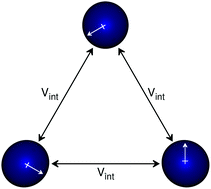Inclusion of dispersion effects in density-functional calculations is now standard practice in computational chemistry. In many dispersion models, the dispersion energy is written as a sum of pairwise atomic interactions consisting of a damped asymptotic expansion from perturbation theory. There has been much recent attention drawn to the importance of “many-body” dispersion effects, which by their name imply limitations with a pairwise atomic expansion. In this perspective, we clarify what is meant by many-body dispersion, as this term has previously referred to two very different physical phenomena, here classified as electronic and atomic many-body effects. Atomic many-body effects refer to the terms in the perturbation-theory expansion of the dispersion energy involving more than two atoms, the leading contribution being the Axilrod–Teller–Muto three-body term. Conversely, electronic many-body effects refer to changes in the dispersion coefficients of the pairwise terms induced by the atomic environment. Regardless of their nature, many-body effects cause pairwise non-additivity in the dispersion energy, such that the dispersion energy of a system does not equal the sum of the dispersion energies of its atomic pairs taken in isolation. A series of examples using the exchange-hole dipole moment (XDM) method are presented to assess the relative importance of electronic and atomic many-body effects on the dispersion energy. Electronic many-body effects can result in variation in the leading-order C6 dispersion coefficients by as much as 50%; hence, their inclusion is critical for good performance of a pairwise asymptotic dispersion correction. Conversely, atomic many-body effects represent less than 1% of the total dispersion energy and are much less significant than higher-order (C8 and C10) pairwise terms. Their importance has been previously overestimated through empirical fitting, where they can offset underlying errors stemming either from neglect of higher-order pairwise terms or from the base density functional.
